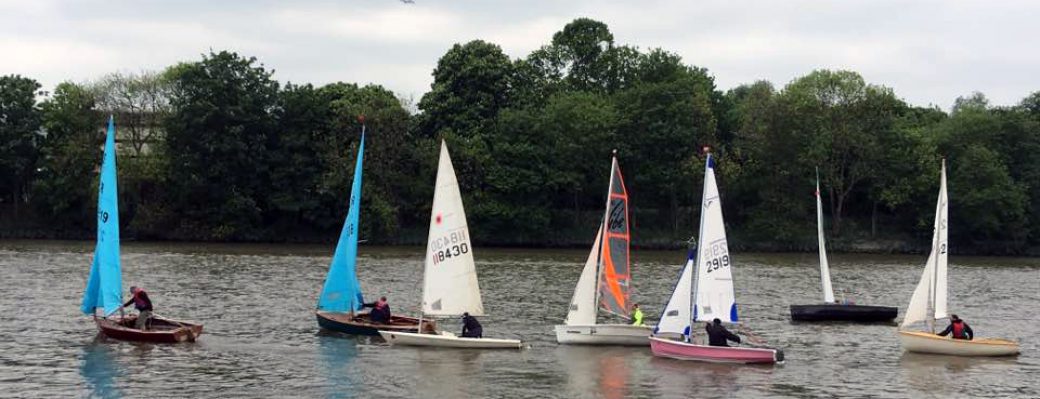We have been discussing methods of getting to and from the start of the C course through Kew Bridge recently and have trialed some ideas of Andrew Ross. This has been helpful and the Committee has agreed that it would be appropriate to publish these notes about the discussions:
The first thing to remember is that each sailing dinghy has a skipper who is responsible for the safety of his crew and boat. She/he should not do anything or ask anybody else to do anything which he/she is not confident is safe and prudent. The safety boat driver is responsible for the safety boat and if she/he is not comfortable to provide requested assistance he/she should refuse, and the club will support him /her.
For large vessels, travelling under Kew Bridge is awkward, because the current is quite strong the arch is narrow and the bridge is on a bend in the river with poor visibility. It is important therefore that the river is clear before setting up to enter the central arch.
In the old days Bermuda rigged boats set off early enough before high water so that they could get under the bridge without having to heel over. This is a good idea and should be routine! An Enterprise can get under the central arch until the water gets up to the top of the vertical part of bridge piers. We certainly need to get back to the habit of allowing extra time, say 30 minutes, to prepare and get to the start of a C course.
If a boat launches late and if the safety boat driver is prepared to help sailors under the bridge, it’s better if he has two competent people on board. If he has more, he can always put the surplus ashore and pick them up again later.
Heeling the dinghies over is easier if no one is aboard, so the helm and crew should transfer to the safety boat, having lifted both the centre board and rudder (this makes the dinghy much more manoeuvrable). Unless the wind is light it’s easier to take down the sails, in which case it is possible to wait for your turn for help by the ramp just downstream. If going through with the sails up the dinghy must be head to wind, so it might be taken through backwards. The safety boat driver must decide if he is happy to take the safety boat backwards or would prefer to go forwards with the dinghy facing backwards. The safety boat driver must be happy that there is enough time to get properly set up before the current takes the boats under the bridge.
After the race roughly the same applies to the return through the bridge! Or preferably wait for the tide to fall.
James Armitage
September 2023

